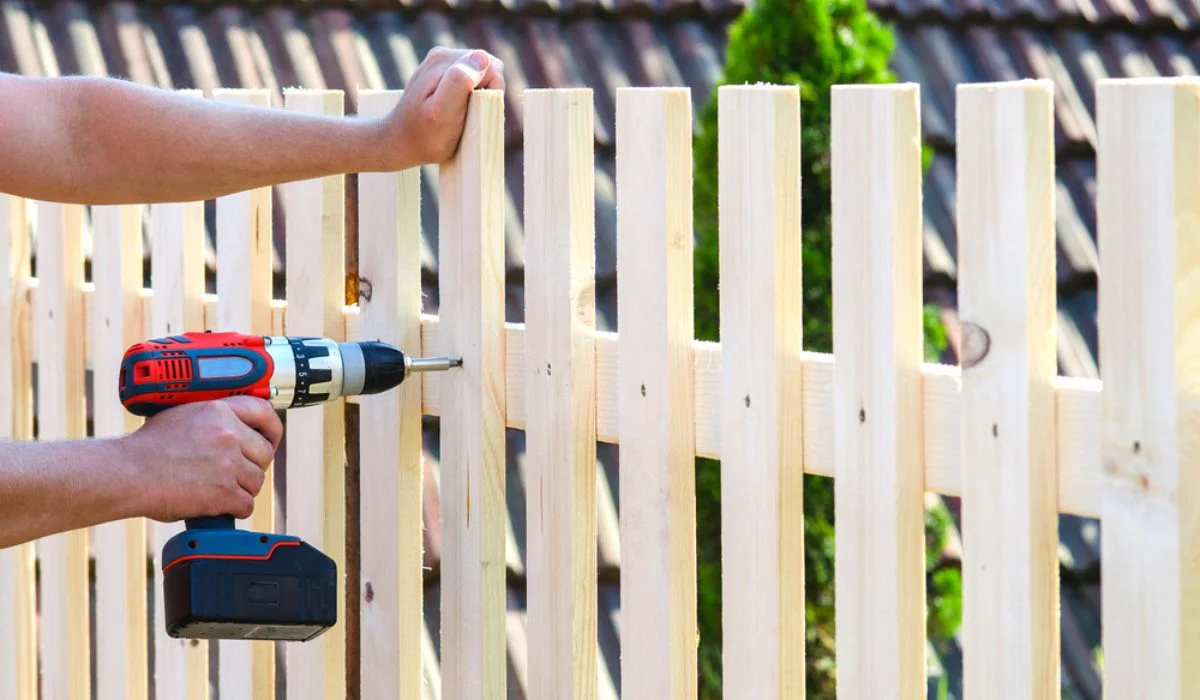Restoring Glory: A Comprehensive Guide to Rejuvenating Your Old Wooden Fence
Over time, even the sturdiest wooden fence succumbs to the elements. Sun, rain, and wind can leave it looking faded, weathered, and maybe even a little worse for wear. But before you consider replacing your fence entirely, consider the power of rejuvenation! With some effort and the right approach, you can breathe new life into your old wooden fence, restoring its strength, beauty, and functionality for years to come.
This comprehensive guide delves into the essential steps for rejuvenating your old wooden fence, from cleaning and repairs to staining and sealing. It caters to both beginner and experienced DIYers, offering valuable tips and tricks to achieve a successful restoration.
Assessing the Situation: Evaluating Your Fence
Before diving into the restoration process, take a good look at your fence and assess its condition. Here’s what to consider:
- Level of Damage: Identify the extent of the damage. Are there loose boards, cracks, or warped sections? Are there signs of rot or insect infestation?
- Cleaning Needs: How dirty is the fence? Is there a buildup of dirt, grime, mildew, or algae?
- Paint or Stain: Does the fence have existing paint or stain? If so, is it peeling or cracking?
The level of damage and cleaning needs will influence the specific tools and materials required for the restoration.
Safety First: Essential Preparations
Working with wood and cleaning solutions always necessitates prioritizing safety. Here’s what you’ll need:
- Protective Gear: Wear gloves, safety glasses, and a dust mask to protect yourself from splinters, dust, and fumes during cleaning, sanding, and repairs.
- Tools: Gather the necessary tools, which might include a hammer, pry bar, saw (hand saw, miter saw, or circular saw depending on repair needs), screwdriver, sander, paint scraper, paintbrush, roller, and a garden hose with a nozzle.
- Cleaning Solutions: Prepare a cleaning solution based on the severity of grime and mildew. Options include a mixture of mild dish soap and water, a diluted bleach solution (wear extra protective gear when using bleach!), or a commercial fence cleaner following the manufacturer’s instructions.
- Repair Materials: Depending on the damage, you might need replacement boards, wood glue, exterior wood filler, and galvanized nails or screws.
- Paint or Stain (Optional): Choose a high-quality exterior paint or stain suitable for wood fences. Consider factors like weather resistance, desired color, and compatibility with any existing coating.
Step-by-Step Restoration Process:
-
Cleaning: Thoroughly clean the entire fence with your chosen cleaning solution. Use a stiff brush to remove dirt, grime, and mildew. Rinse the fence with clean water and allow it to dry completely (ideally for 24-48 hours) before proceeding.
-
Repairs: Address any loose boards, cracks, or warped sections. Tighten loose screws or nails, replace damaged boards, and use wood glue and filler for cracks. Ensure a smooth surface for optimal paint or stain application.
-
Sanding (Optional): If the fence has existing paint or stain that is peeling or cracking significantly, sanding might be necessary. Use a medium-grit sandpaper to remove loose paint or stain and create a slightly rough surface for better paint or stain adhesion. Sand with the grain of the wood and avoid sanding excessively.
-
Paint or Stain (Optional): If you choose to paint or stain your fence, ensure the wood is completely dry. Apply a high-quality exterior paint or stain following the manufacturer’s instructions. Typically, two coats are recommended for optimal coverage and protection.
Pro Tip: Test your chosen paint or stain color on a small, inconspicuous area of the fence before applying it to the entire surface.
Additional Tips and Considerations:
- Power Washing: For heavily soiled fences, consider using a power washer. However, use caution and maintain a low pressure setting (around 1,500 PSI) to avoid damaging the wood. Opt for a fan nozzle attachment for more control.
- Weather Conditions: Don’t attempt to rejuvenate your fence in extreme heat, rain, or direct sunlight. Choose a day with moderate temperatures and clear skies for optimal drying and paint/stain application.
- Environmental Concerns: Choose environmentally friendly cleaning solutions and opt for low-VOC paints and stains whenever possible.
Frequently Asked Questions (FAQ)
- How often should I rejuvenate my wooden fence?
The frequency depends on the quality of the wood, weather conditions, and the type of paint or stain used. Generally, a well-maintained fence with a high-quality finish might need rejuvenation every 5-7 years.

